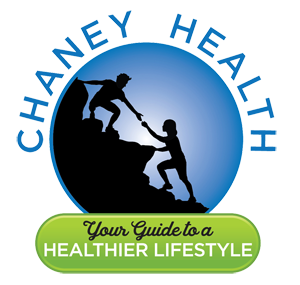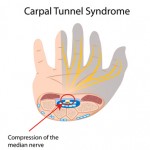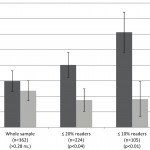Does Fish Oil Reduce Heart Disease Risk?
Author: Dr. Stephen Chaney
 One of my readers recently sent me a video titled “Is Fish Oil Just Snake Oil?” and asked me to comment on it. The doctor who made the video claimed that the most recent studies had definitively shown that omega-3 fatty acids, whether from fish or fish oil, do not decrease the risk of heart attack, stroke or cardiovascular death. He went on to say that the case was closed. There was no point in even doing any more studies.
One of my readers recently sent me a video titled “Is Fish Oil Just Snake Oil?” and asked me to comment on it. The doctor who made the video claimed that the most recent studies had definitively shown that omega-3 fatty acids, whether from fish or fish oil, do not decrease the risk of heart attack, stroke or cardiovascular death. He went on to say that the case was closed. There was no point in even doing any more studies.
My reader, like many of you, was confused. Wasn’t it just a few years ago we were being told that clinical studies have shown that omega-3 fatty acids significantly reduce the risk of heart disease? Hadn’t major health organizations recommended omega-3 fatty acids as part of a heart health diet? What has changed?
The answer to the first two questions is a resounding YES, and “What has changed?” is THE story. Let me explain.
Fish Oil And Heart Disease Risk In Healthy People
If we look at intervention studies in healthy people (what we scientists refer to as primary prevention studies) the results have been pretty uniform over the years. In a primary prevention setting, fish oil cannot be shown to significantly reduce the risk of heart disease (Rizos et al, JAMA, 308: 1024-1033, 2012).
That’s not unexpected because it is almost impossible to show that any intervention significantly reduces the risk of heart disease in healthy populations. For example, as I pointed out in recent Health Tips From the Professor (“Do Statins Really Work?” and “Can An Apple A Day Keep Statins Away?”) you can’t even show that statins significantly reduce heart attack risk in healthy populations.
If you can’t prove that statins reduce the risk of heart attacks in a healthy population, it should come as no surprise that you can’t prove that fish oil reduce heart attacks in a healthy population. To answer that question we need to look at whether fish oil reduces the risk of heart attacks in high risk populations.
Fish Oil And Heart Disease Risk In Sick People – The Early Studies
Most of the early studies looking at the effect of fish oil in patients at high risk of cardiovascular disease (what we scientists refer to as secondary prevention studies) reported very positive results.
For example, the DART1 study (Burr et al, Lancet, 2: 757-761, 1989) and the US Physician’s Health Study (Albert et al, JAMA, 279: 23-28, 1998) reported a 29% decrease in total mortality and a 52% decrease in sudden deaths related to heart disease in patients consuming diets rich in omega-3 containing fish.
Even more striking was the GISSI-Prevenzione study (Marchioli et al, Lancet, 354: 447-455, 1999; Marchioli et al, Eur. Heart J, 21: 949-952, 2000; Marchioli et al, Circulation, 105: 1897-1903, 2002). This was a very robust and well designed study. It looked at the effect of a fish oil supplement providing 1 g/day of omega-3 fatty acids on the risk of a second heart attack in 11,323 patients who had survived a non-fatal heart attack within the last 3 months – a very high risk group.
The results were clear cut. Over the next 3.5 years supplementation with fish oil reduced overall death by 15% and sudden death due to heart disease by 30% compared to a placebo. And, if you looked at the first 4 months, when the risk of a second heart attack is highest, the fish oil supplement reduced the risk of overall death by 41% and sudden death by 53%.
The authors estimated that treating 1,000 heart attack patients with 1 g/day of fish oil would save 5.7 lives per year. That is almost identical to the 5.2 lives saved per 1,000 patients per year by the statin drug pravastatin in the LIPID trial (NEJM, 339: 1349-1357, 1998).
No wonder the American Heart Association said that patients “could consider fish oil supplementation for heart disease risk prevention.”
Fish Oil And Heart Disease Risk In Sick People – The Latest Studies
 However, the most recent studies have been uniformly negative. For example, the ORIGIN trial (Bosch et al, NEJM, 367: 309-318, 2012) treated 12,536 patients who were considered at high risk of heart disease because of diabetes or pre-diabetes with either 1 g/day of fish oil or a placebo. This was also a robust, well designed study, and it found no effect of the fish oil supplement on either heart attacks or deaths due to heart disease.
However, the most recent studies have been uniformly negative. For example, the ORIGIN trial (Bosch et al, NEJM, 367: 309-318, 2012) treated 12,536 patients who were considered at high risk of heart disease because of diabetes or pre-diabetes with either 1 g/day of fish oil or a placebo. This was also a robust, well designed study, and it found no effect of the fish oil supplement on either heart attacks or deaths due to heart disease.
Similarly, a recent meta-analysis looking at the combined effects of 14 randomized, double-blind, placebo-controlled trials in patients at high risk of heart disease found no significant effect of fish oil supplements on overall deaths, sudden death due to heart disease, heart attacks, congestive heart failure or stroke (Kwak et al, Arch. Int. Med., 172: 686-694, 2012).
No wonder you are confused by all of the conflicting studies. You must be wondering: “Is the American Heart Association wrong?” “Are fish oil supplements useless for reducing heart disease risk?”
What Has Changed Between The Early Studies & The Latest Studies?
When a trained scientist sees the outcome of well designed clinical studies change over time, he or she asks: “What has changed in the studies?” It turns out that a lot has changed.
1) In the first place the criteria for people considered at risk for heart attack and stoke have changed dramatically. Not only has the definition of high cholesterol” been dramatically lowered, but cardiologists now treat people for heart disease if they have inflammation, elevated triglycerides, elevated blood pressure, diabetes, pre-diabetes or minor arrythmia.
For example, the GISSI-Prevenzione study recruited patients who had a heart attack within the past three months, while the ORIGIN study just looked at people who had diabetes or impaired blood sugar control. While both groups could be considered high risk, the patients in the earlier studies were at much higher risk for an imminent heart attack or stroke – thus making it much easier to detect a beneficial effect of omega-3 supplementation.
2) Secondly, the standard of care for people considered at risk for heart disease has also changed dramatically. In the earlier studies patients were generally treated with one or two drugs – generally a beta-blockers and/or drug to lower blood pressure. In the more recent studies the patients generally receive at least 3 to 5 different medications – medications to lower cholesterol, lower blood pressure, lower triglycerides, reduce inflammation, reduce arrhythmia, reduce blood clotting, and medications to reduce the side effects of those medications.
Since those medications perform many of the beneficial effects of omega-3 fatty acids, it is perhaps no surprise that it is now very difficult to show any additional benefit of omega-3 fatty acids in patients on multiple medications.
The bottom line is that we are no longer asking the same question. The earlier studies were asking whether fish oil supplements reduce the risk of heart attacks or cardiovascular death in patients at high risk of heart disease. The more recent studies are asking whether fish oil supplements provide any additional benefits in a high risk population that is already on 3-5 medications to reduce their risk of heart disease.
However, the people who are writing the headlines you are reading (and the videos you are watching) are not making that distinction. They are pretending that nothing has changed in the way the studies are designed. They are telling you that the latest studies contradict the earlier studies when, in fact, they are measuring two different things.
Is Fish Oil Really Snake Oil?
Was the doctor who made the video “Is Fish Oil Just Snake Oil?” correct in saying that omega-3 fatty acids are ineffective at reducing the risk of heart disease? The answer is yes and no.
If you take the medical viewpoint that the proper way to treat anyone at the slightest risk of heart disease is with 3-5 medications – with all of their side effects, the answer seems to be pretty clear cut that adding fish oil to your regimen provides little additional benefit.
However, that is not the question that interests me. I’d like to know whether I can reduce my risk of heart attack and cardiovascular death by taking omega-3 fatty acids in place of those drugs – as the original studies have shown.
I’m sure many of my readers feel the same way.
The Bottom Line
- Studies performed prior to 2000 have generally shown that fish oil supplements reduce the risk of a second heart attack in patients who have previously had a heart attack. One study even suggested that they were as effective as statin drugs at reducing heart attack risk in this population.
- Recent studies have called into question the beneficial effects of fish oil supplements at reducing the risk of heart disease. However, these studies were performed with lower risk patients and the patients were on 3-5 medications to reduce their risk of heart attack or stroke.
- The recent studies are no longer evaluating whether fish oil supplements can reduce the risk of heart disease. They are asking whether they have any additional beneficial effects for people taking multiple medications. That’s a totally different question.
- So ignore the headlines saying that fish oil is snake oil. If you are content taking multiple medications to reduce your risk of heart disease, it is probably correct to say that omega-3 fatty acids provide little additional benefit.
- However, if you are interested in a more holistic, drug-free approach to reducing your risk of heart disease, I still recommend omega-3 fatty acids as part of a heart healthy diet, as does the American Heart Association.
These statements have not been evaluated by the Food and Drug Administration. This information is not intended to diagnose, treat, cure or prevent any disease.











